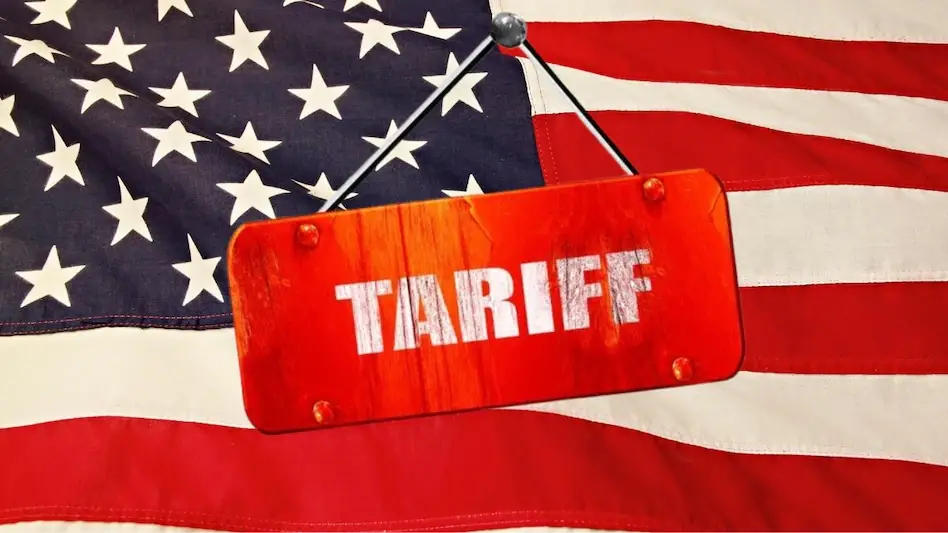Summary:
US tariffs policies are creating significant challenges for American farmers, particularly soybean and corn growers, who face reduced profitability and rising input costs. As Chinese retaliatory tariffs force US exporters to seek alternative markets in South and Southeast Asia, farmers are experiencing losses of $100 per acre amidst escalating fertilizer and crop protection costs. The Trump administration's trade policies are testing the resilience of the US agricultural sector, raising questions about long-term market dynamics.
US Tariffs Create China Trade Factor: Markets in Flux
The ongoing tensions between Washington and Beijing have fundamentally altered established commodity routes. China's retaliatory levies have effectively closed what was once the largest market for American soybeans, forcing exporters to rapidly recalibrate their global strategy. This seismic shift in dynamics has prompted the industry to explore new horizons.
In response to losing access to Chinese markets, American exporters have embarked on an ambitious campaign to penetrate alternative destinations across South and Southeast Asia. The industry has initiated outreach programs to approximately 20 nations, presenting a compelling case for American products based on sustainability credentials and superior protein content compared to Brazilian and Argentine alternatives.
Agricultural Cost-Price Squeeze from US Trade Wars
American producers face a perfect storm of challenges that extends beyond market access issues. The dual cultivation system employed by many growers – alternating between soybeans and corn – has become a liability rather than a hedge against market volatility. Current conditions have resulted in staggering losses of $100 per acre across both crops, as commodity prices remain subdued while production costs continue their upward trajectory.
The timing couldn't be worse for input cost escalation. As September approaches – the critical period when producers must lock in forward contracts for fertilizers and crop protection measures for the 2026 growing season – cultivators face the prospect of even higher costs. The irony is particularly acute given that Canada, a major source of potash for American farming, now falls under the duty regime, directly increasing input costs.
US Farmers' Strategic Pivots and Market Adaptations
The American farming sector's response to these challenges demonstrates both resilience and innovation. By highlighting the sustainability aspects of domestic practices and emphasizing the superior protein content, the industry is attempting to differentiate its products in new markets. This strategic pivot represents more than a temporary adjustment – it signals a fundamental reimagining of global commodity flows.
However, questions remain about the viability of these alternative destinations. Can South and Southeast Asian demand absorb the volumes previously destined for China? Will the premium pricing strategy based on sustainability and quality attributes succeed in markets traditionally focused on cost competitiveness?
The Waiting Game: How US Agricultural Tariffs Test Farmers
As the dispute continues, American producers find themselves in an increasingly precarious position. The current stance of "watching and waiting" reflects both hope for diplomatic resolution and resignation to market realities. The farming community's patience, however, is not infinite. With each passing season, the financial pressure mounts, testing the limits of rural balance sheets and credit systems.
The administration faces a delicate balancing act: maintaining its tough stance while avoiding irreversible damage to one of the country's most important export sectors. The political implications are significant, given the sector's influence in key electoral states.
US Trade Implications for Global Agricultural Markets
The current situation presents both challenges and opportunities for global commodity dealers. As traditional routes shift and new relationships form, market participants must remain agile and informed. The evolving dynamics offer potential arbitrage opportunities, particularly in markets where American products are seeking new homes and competing supply chains are adjusting to fill voids in China.
For commodity trading firms like Hectar, understanding these market disruptions is crucial. Real-time intelligence, coupled with sophisticated risk assessment tools, becomes essential for navigating the volatility created by policy uncertainty.
Conclusion
The current duty dispute represents more than a temporary disruption in commodity markets – it signals a potential long-term restructuring of global flows. As American producers grapple with reduced profitability and rising costs, their ability to weather this storm will depend on their financial resilience and the administration's willingness to balance policy objectives with sector stability.
The critical question remains: how long can growers sustain losses while waiting for either market conditions to improve or policies to shift? The answer will shape not just American farming but global commodity markets for years to come. As this situation evolves, market participants must stay attuned to policy developments while preparing for a future where traditional relationships may be permanently altered.
For commodity dealers and businesses navigating these complex market dynamics, access to real-time data and sophisticated analytical tools has never been more critical. Understanding how policy shifts translate into market opportunities requires both deep industry knowledge and cutting-edge technology – precisely the combination that modern commodity trading demands.Retry
